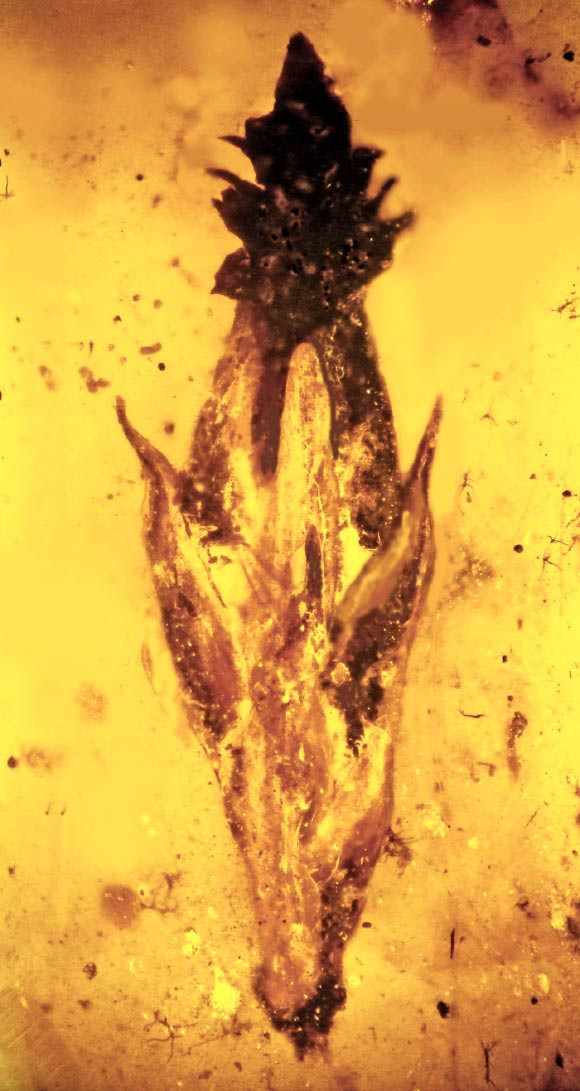100-million-year-old fossil of earliest grass linked to dinosaurs that feasted on LSD producing fungus

A 100-million-old fossil from Myanmar has revealed evidence of the earliest grass specimen from which all other crops evolved. The grass was covered by a fungus that had infected it.
The discovery shows that the parasitic fungus infecting the grass, the grass and the dinosaurs that ate the infected grass coexisted for millions of years.
The fungus in this grass specimen, which is now extinct, was named Palaeoclaviceps parasiticus.
It is very similar to the fungus Claviceps, commonly known as ergot.
Ergot has been both a toxin and natural hallucinogen. In the Middle Ages it sometimes killed thousands of people during epidemics when ergot-infected rye bread was more common.
More than 1,000 compounds have been extracted or derived from ergot. They also included, in the mid-1900s, the powerful psychedelic compound lysergic acid diethylamide, or LSD.
The amber fossil dates about 100 million years ago to the middle Cretaceous, when the land was dominated by dinosaurs and conifers and the earliest flowering plants, grasses and small mammals were just beginning to evolve.
Apparently, huge sauropod dinosaurs feasted on the psychotropic fungus, which in other animal species can cause anything from hallucinations to delirium, gangrene, convulsions or the staggers. What effect the fungus had on the dinosaurs is not really known.
The findings and analysis of this remarkable fossil were just published online in the journal Palaeodiversity, by researchers from Oregon State University, the USDA Agricultural Research Service and Germany.
"It seems like ergot has been involved with animals and humans almost forever, and now we know that this fungus literally dates back to the earliest evolution of grasses," said George Poinar, Jr, an expert on the life forms found in amber and a faculty member in the OSU College of Science.
"This is an important discovery that helps us understand the timeline of grass development, which now forms the basis of the human food supply in such crops as corn, rice or wheat," Poinar said.
"But it also shows that this parasitic fungus may have been around almost as long as the grasses themselves, as both a toxin and natural hallucinogen."
Ergot may have helped some grasses with defence mechanisms helping to repel herbivores. It's bitter and not a preferred food to livestock and it's still a problem in cereal and grass seed production.
© Copyright IBTimes 2025. All rights reserved.





















